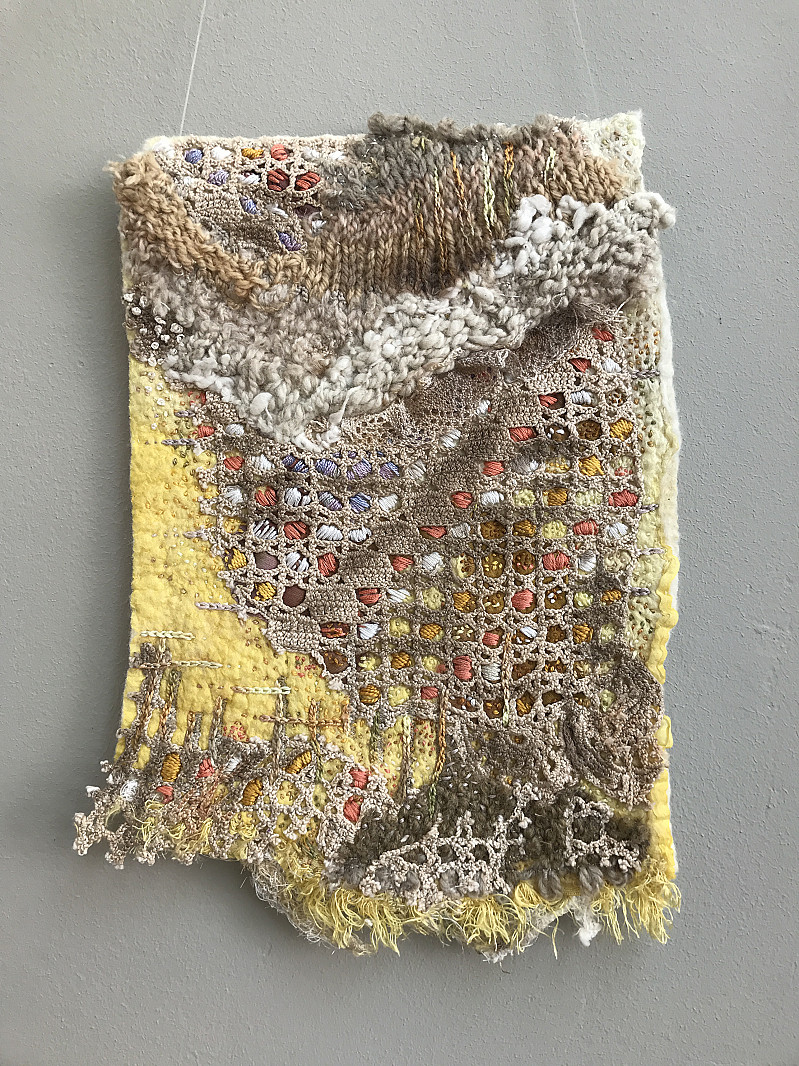- Celia de Villiers - Conímbriga
- The Threads That Bind Us
- 2020
- Various Fibre
- 33 x 23 centimeters
Medium: Incomplete crocheted tray-cloth, found in an abandoned house in Portugal.
Nuno-felt, repurposed knitting, commercial and hand-dyed embroidery threads.
Conímbriga
Archaeological excavations open enticing glimpses into layers of time, place and metaphor.
The ancient rocks at Portugal’s best-preserved archaeological site hold memories of heating
ducts for three public thermal baths. Ruins of simple dwellings and grand villas with
exquisite mosaic floors and the remains of elaborate fountains await curious visitors. I
imagine the richly pigmented fragments of stone being assembled by local women, who
contributed to the intricate, geometric patterns and the fascinating hunting scenes on the
floors. I admire the artisans who created thousands of thumbnail-sized tesserae without
power-tools.
The citadel Conímbriga, of the Roman province Lusitania, thrived between the Iron age (9 th
century BC) and the 5 th century AD. Its inhabitants were dispersed by conquering Swabian
forces. In layering, excavating, and remembering through textiles, I reconstruct my
impressions of its superimposed sense of place, in homage to the artesã who left behind the
world-renowned mosaics, many of which still remain forgotten underground.


